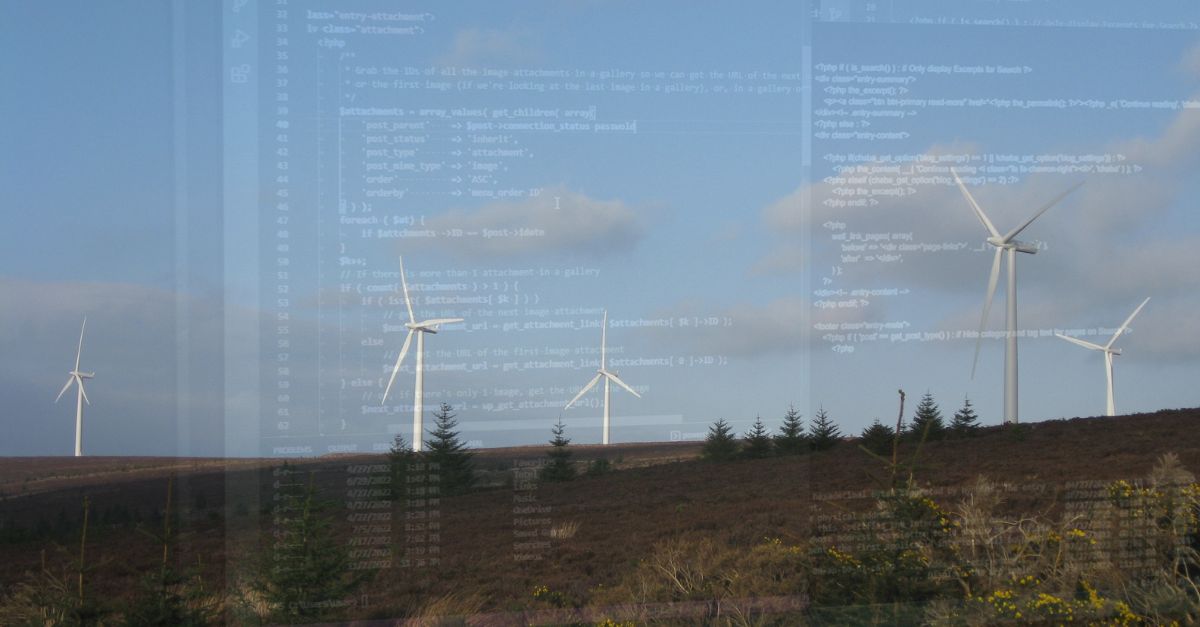Driving transparency in wind energy: open-source solutions for enhanced asset performance
by RES | Jul 23, 2025 | Reading time: 4 min

By Alex Clerc, Senior Controls Engineer
At RES, we are committed to driving innovation in renewable energy, and digital solutions are central to unlocking more energy from existing wind farms. Upgrading turbines is one of the most effective ways to increase output from existing infrastructure, helping deliver more clean energy, more efficiently. For example, our AeroUp solution utilises aerodynamic upgrades and software to boost energy uplift, while TuneUp optimises turbine control parameters, improving efficiency and reducing maintenance costs.
These upgrades are proven to add value – but for them to scale, performance gains must be measurable, bankable and trusted. Verifying their impact with enough certainty to support investment decisions remains a challenge. While SCADA data provides valuable insights into the performance of wind farms, it presents challenges in accurately measuring the results and return on investment of upgrades. One key issue is that SCADA data often lacks precise measurements of the wind reaching each turbine, which is crucial for understanding energy conversion. Additionally, onshore wind conditions can vary significantly between turbines, making uplift evaluation complex, prone to uncertainty and preventing improvements from being fully recognised in asset cashflows and valuations.
To address these challenges, we developed a transparent, technically robust, and open-source approach to measuring energy uplift. Our Python-based tool, Wind-up provides a reproducible framework that works even in the absence of high-quality wind speed measurements, such as from LiDAR. By publishing both the methodology and code, we enable customers, due diligence engineers and the broader industry to verify the impact of upgrades with confidence. We welcome external contributions, and it’s great to see the tool already receiving industry input. By combining open access with deep technical rigour, we’re helping set a new standard for how performance uplift is measured and trusted.
This level of transparency is key to building trust in the performance improvements that upgrades can deliver – and essential for reflecting them in cashflows and asset valuations.
Accurate measurement of AEP uplift is a crucial capability for scaling upgrade technologies and increasing wind farm output. However, high-quality wind measurements are not always available. That’s why we developed a method that uses other turbines as references and remains as consistent with IEC 61400-12-1 as possible, while also accommodating real-world conditions, including waked data and enhanced uncertainty calculations. Establishing an industry consensus on how to measure uplift under real-world conditions is critical if upgrade technologies are to become a mainstream investment choice.
At the core of our evaluation is a comparison of energy output before and after an upgrade. We analyse two performance curves: one representing energy production before the upgrade and another after; the uplift is the difference between these two curves.

Our method has been applied to the Hill of Towie wind farm in Scotland – a 21-turbine site developed by RES and owned by TRIG. Thanks to TRIG’s support, we’ve made over eight years of SCADA data from this site publicly available through Zenodo, enabling further research and industry collaboration. This dataset includes key upgrade events: an initial AeroUp test on one turbine in September 2021, full AeroUp rollout across the site between July 2022 and May 2023, and a TuneUp deployment on nine turbines in March 2024.
Measuring turbine performance begins with power output, which is straightforward. However, estimating the baseline wind speed at a turbine is more complex, as the turbine’s own measurements may be influenced by the upgrade. Ideally, we use reliable nearby wind measurements that meet industry standards, such as those from a weather mast or ground-mounted LiDAR. If these are unavailable, we estimate wind speed by combining data from reference turbines. This involves a few key steps: first, if no direct wind speed reference exists, we create an estimate by blending data from nearby turbines. Next, we refine this estimate using a method called ‘directional detrending,’ which accounts for wind direction and the operational status of upwind turbines (to correct for wake effects) and ensures accuracy.
Once we have an estimated wind speed at the test turbine, we measure power curves and calculate annual energy production (AEP) based on expected wind speed distributions. Our tool also includes a comprehensive uncertainty analysis for uplift calculations. AEP results for two case studies from Hill of Towie are presented below.
AeroUp
The script uplift_analysis/aero_up.py analyses the energy uplift thanks to AeroUp for T13. The result is a P50 uplift of 4.3% with a 90% confidence interval of 3.3% to 5.3%. This is visualised in the plot below along with the uplift results for the three selected reference turbines, which are near 0% uplift as expected.

TuneUp
The script uplift_analysis/tune_up.py analyses the energy uplift thanks to TuneUp for nine test turbines. The result is a P50 uplift of 1.1% with a 90% confidence interval of 0.2% to 2.0%. This is visualised in the plot below along with the uplift result for the ten unchanged reference turbines, which is near 0% uplift as expected.

Upgrading existing wind farms is a highly effective way to unlock additional clean energy without requiring large-scale infrastructure investments. But to realise this potential at scale, the value of upgrades must be independently measurable, clearly understood, and reflected in investment-grade metrics.
That’s where Wind-up comes in – providing the transparency and rigour needed for owners, investors, and technical teams to trust upgrade outcomes.
By open-sourcing our tools, data, and methodology, we aim to support industry-wide progress and enable better decision-making across the renewables sector.
Further documentation about Wind-up is available here.
A full Wind-up analysis of an open-source wake steering dataset is available here.

